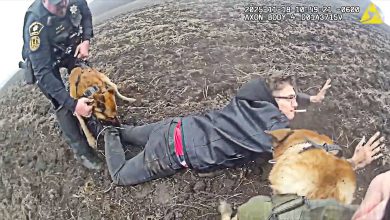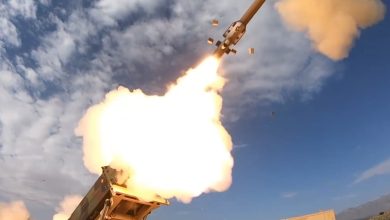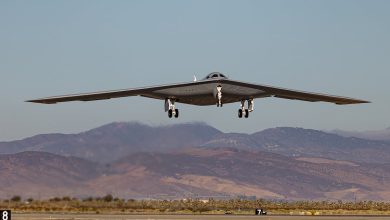Ukraine, NATO eye tech trials for intercepting Russia’s cabled drones

MILAN — NATO and Ukrainian officials are slated to stage a trial of unmanned aerial vehicle technologies aimed at addressing a dogged threat: Russian first-person-view drones with fiber-optic cables that cannot be brought down with electronic interference.
An event organized by the NATO-Ukraine Joint Analysis, Training, and Education Center and NATO’s Allied Command Transformation will be held on June 20 in Tallinn, Estonia, to demonstrate new countermeasures that have been percolating among defense firms.
The envisioned countermeasures are required to have a detection range of at least 500 meters, be able to operate during the day and at night, weigh under 100 kilograms, and not exceed an overall cost of $100,000.
FPV drones operating via fiber-optic cables are a new military challenge globally, as they are largely immune to jamming and interception attempts. These cheap and small weapons relay signals through a thin cable, which makes them resistant to eletro-magnetic interference.
Drones were a key part of Ukraine’s largest long-range attack since the onset of the war carried out on June 1, where the smuggled weapons were used to target and strike Russian warplanes and strategic sites.
The appearance of command-wire drones has opened yet another chapter in the cat-and-mouse game of innovations and countermeasures in drone warfare on both sides, said Federico Borsari, resident fellow at the Center for European Policy Analysis.
“From a technical standpoint, Russia and Ukraine are now trying to push the limits of the usual tradeoff between range, speed, payload and endurance by introducing more powerful batteries to increase their capabilities and longer fiber-optic spools,” he said.
He added that longer cables are useful in carrying out attacks and ambush tactics against enemy logistics where the FPVs lie dormant near roads and are activated by an operator when a convoy passes nearby.
Ukrainian troops have so far favored an FPV-tracking tactic by spotting the reflective fibers spooling out behind the drones, which were easiest to find in bright sunlight, and then tracing them back to Russian operators.
In one documented instance, one of the drone units of the Ukrainian National Guard Kara Dag Brigade struck a Russian base during the winter months by following a maze of fibre optics back to the hideout.
However, as the use of fiber-optic FPVs has exploded, old cables are now littering parts of the battlefield, creating mazes that are almost impossible trace to their launch points.
Borsari said Ukraine has also experimented with active countermeasures, including using drone interceptors and quadcopters to destroy FPVs mid-flight or when they are on the ground by dropping small bomblets on them.
“Currently, the best defense relies on a combination of passive and active countermeasures and should also incorporate robust signal intelligence and other forms of intel-gathering techniques to intercept Russian communications and locate their drone teams,” he said.
Elisabeth Gosselin-Malo is a Europe correspondent for Defense News. She covers a wide range of topics related to military procurement and international security, and specializes in reporting on the aviation sector. She is based in Milan, Italy.







